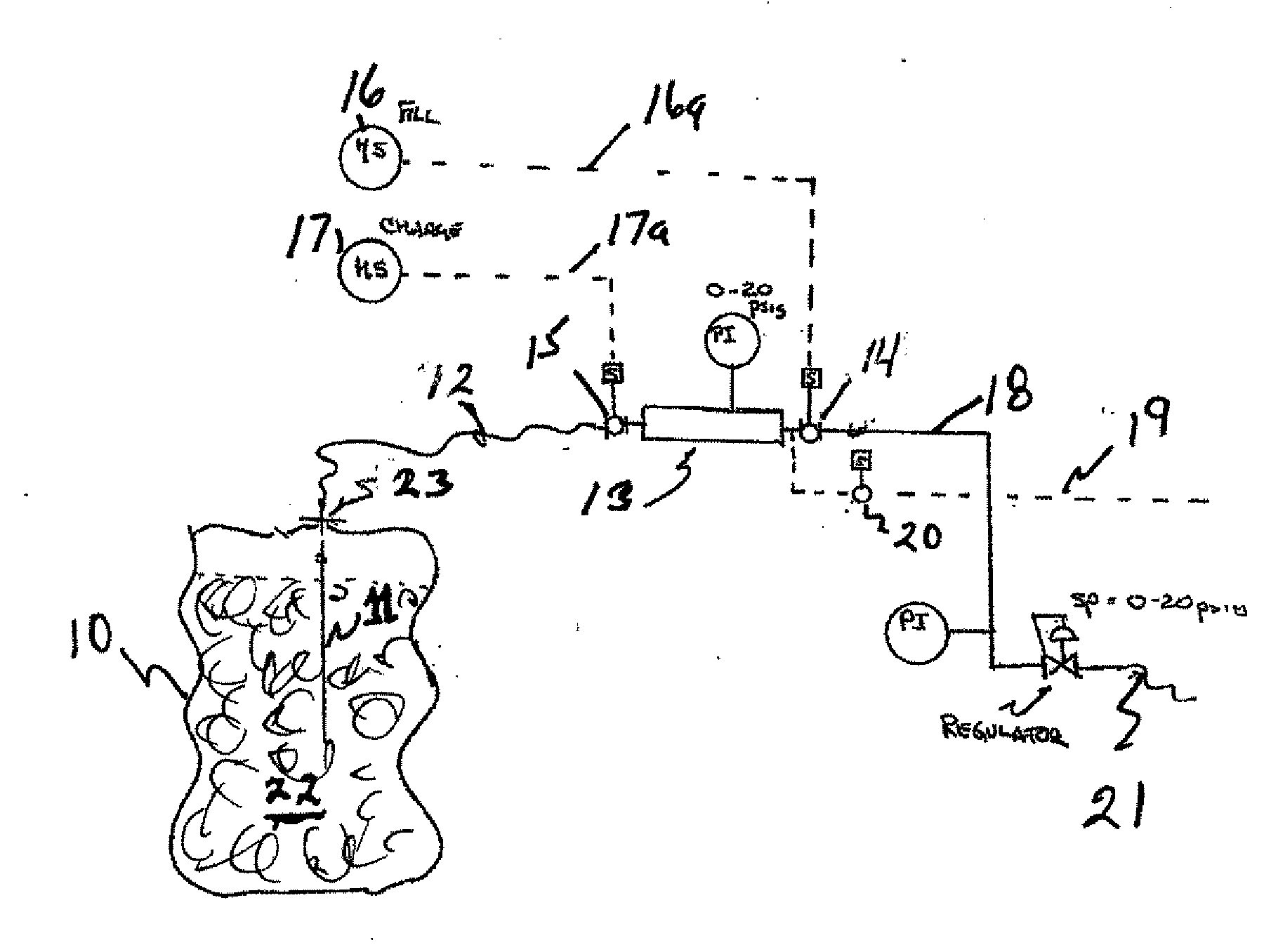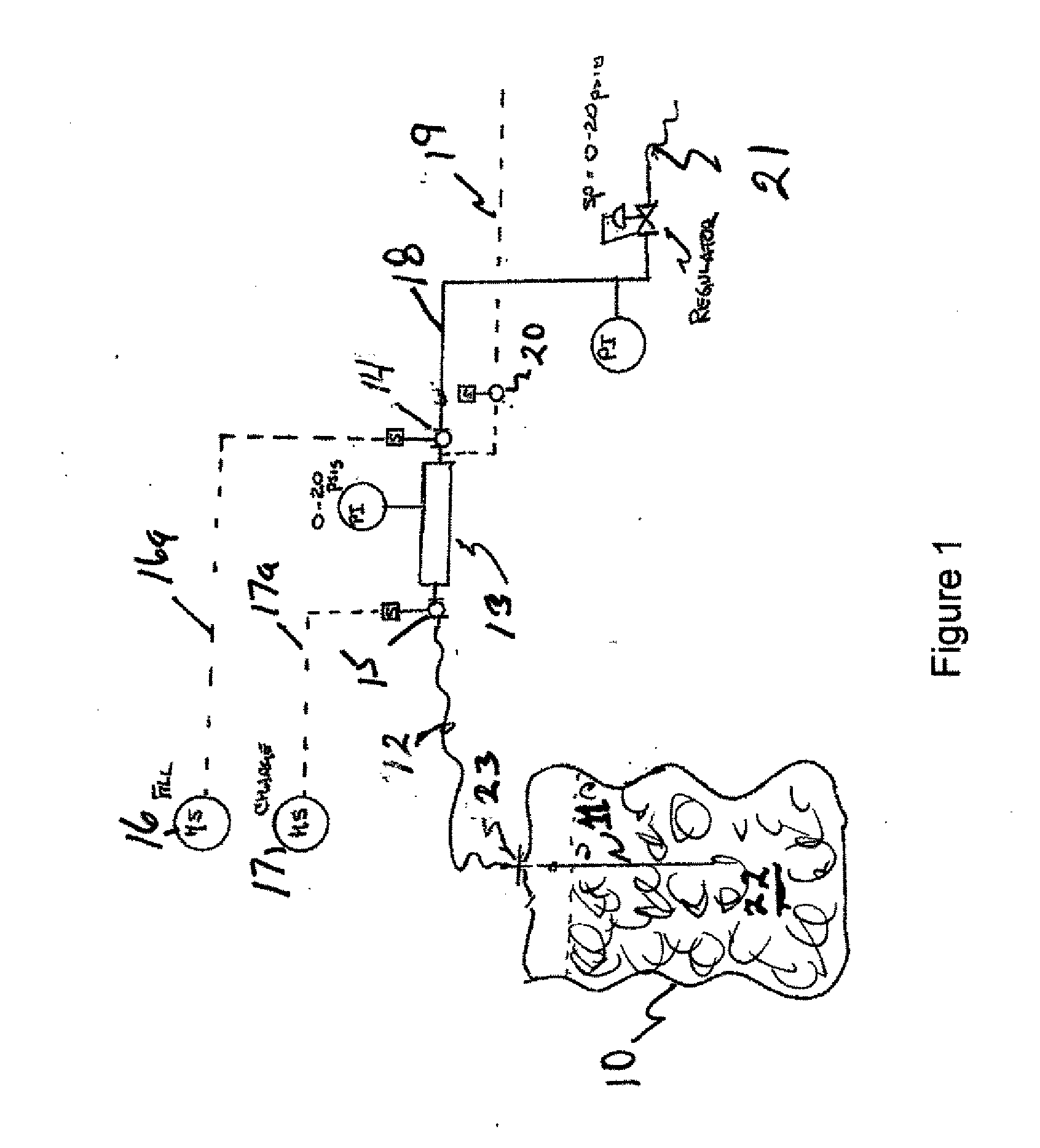Fibrous products having reduced formaldehyde emissions
a technology of formaldehyde and fibrous products, applied in the field of reducing the level of formaldehyde emissions in fibrous products, can solve the problems of fiberglass insulation products, their potential for formaldehyde emissions during handling, installation and subsequent use, and the effect of reducing the level of formaldehyde emissions
- Summary
- Abstract
- Description
- Claims
- Application Information
AI Technical Summary
Problems solved by technology
Method used
Image
Examples
example 1
[0045]This example illustrates an embodiment of the present invention in which a formaldehyde-emitting product, in this case a commercially available blowing wool product (Owens Corning Advanced ThermaCube Plus® blowing wool) is encased in a substantially air-tight container or package with a gaseous formaldehyde scavenger, e.g., sulfur dioxide.
[0046]A control sample was prepared by placing 135 grams of the Advanced ThermaCube Plus® (hereinafter ATC+) blowing wool into a large Ziplock® bag. The bag then was sealed tightly.
[0047]To prepare a treated sample, 135 grams of the ATC+ blowing wool also was placed into a large Ziplock® bag and then SO2, as a gaseous formaldehyde scavenger, was filled into the bag (the intent was to replace all of the gas in the bag with SO2) and the bag was sealed tightly.
[0048]The product formaldehyde emissions were measured in the DMC (Dynamic Micro Chamber) using the Ceq test three days after the samples were prepared. A DMC is described in Georgia-Pacif...
example 2
[0050]To simulate the manufacture of fiberglass insulation, batts were prepared in the laboratory as follows. A roll of 1 inch thick, un-bonded, fiberglass was obtained from Resolute Manufacturing and divided into individual sheets weighing about 30 grams. Individual un-bonded fiberglass sheets were placed in a tray. A formaldehyde-containing binder was placed into a reservoir and air was used to aspirate the binder into a fine mist. The mist was drawn through each individual batt using an air exhaust hood. This technique caused fine binder droplets to be deposited onto and into the batt. Approximately eight grams of binder was deposited onto each sample of the glass batt. Following binder application, the batts were cured in a forced air oven for two minutes at 425° F. (218° C.) to cure the binder. After curing, one batt was treated with ammonia by breaking ammonia smelling salt inside a Ziplock®-type storage bag which was immediately sealed, the other sample was transferred to ano...
example 3
[0052]This example illustrates another embodiment of the present invention in which a formaldehyde-emitting product, in this case a commercially available blowing wool product (Owens Corning Advanced Thermacube Plus® blowing wool) is encased in a substantially air-tight container or package with a gaseous formaldehyde scavenger, e.g., sulfur dioxide.
[0053]A control sample was prepared by placing 135 grams of the Advanced ThermaCube Plus® (hereinafter ATC+) blowing wool into a 1 L nalgene bottle and sealed.
[0054]Treated samples were prepared by also putting 135 grams of ATC+ blowing wool into a 1 L nalgene bottle. Sulfur dioxide (120 cubic centimeters STP) was injected into the bottom of the bottle using a hypodermic needle and the bottle was sealed. Three concentrations of sulfur dioxide were used, pure (100%), 10% (by volume in nitrogen) and 1% (by volume in nitrogen).
[0055]The product formaldehyde emissions were measured four (4) days later in the DMC (Dynamic Micro Chamber) using...
PUM
 Login to View More
Login to View More Abstract
Description
Claims
Application Information
 Login to View More
Login to View More - R&D
- Intellectual Property
- Life Sciences
- Materials
- Tech Scout
- Unparalleled Data Quality
- Higher Quality Content
- 60% Fewer Hallucinations
Browse by: Latest US Patents, China's latest patents, Technical Efficacy Thesaurus, Application Domain, Technology Topic, Popular Technical Reports.
© 2025 PatSnap. All rights reserved.Legal|Privacy policy|Modern Slavery Act Transparency Statement|Sitemap|About US| Contact US: help@patsnap.com


